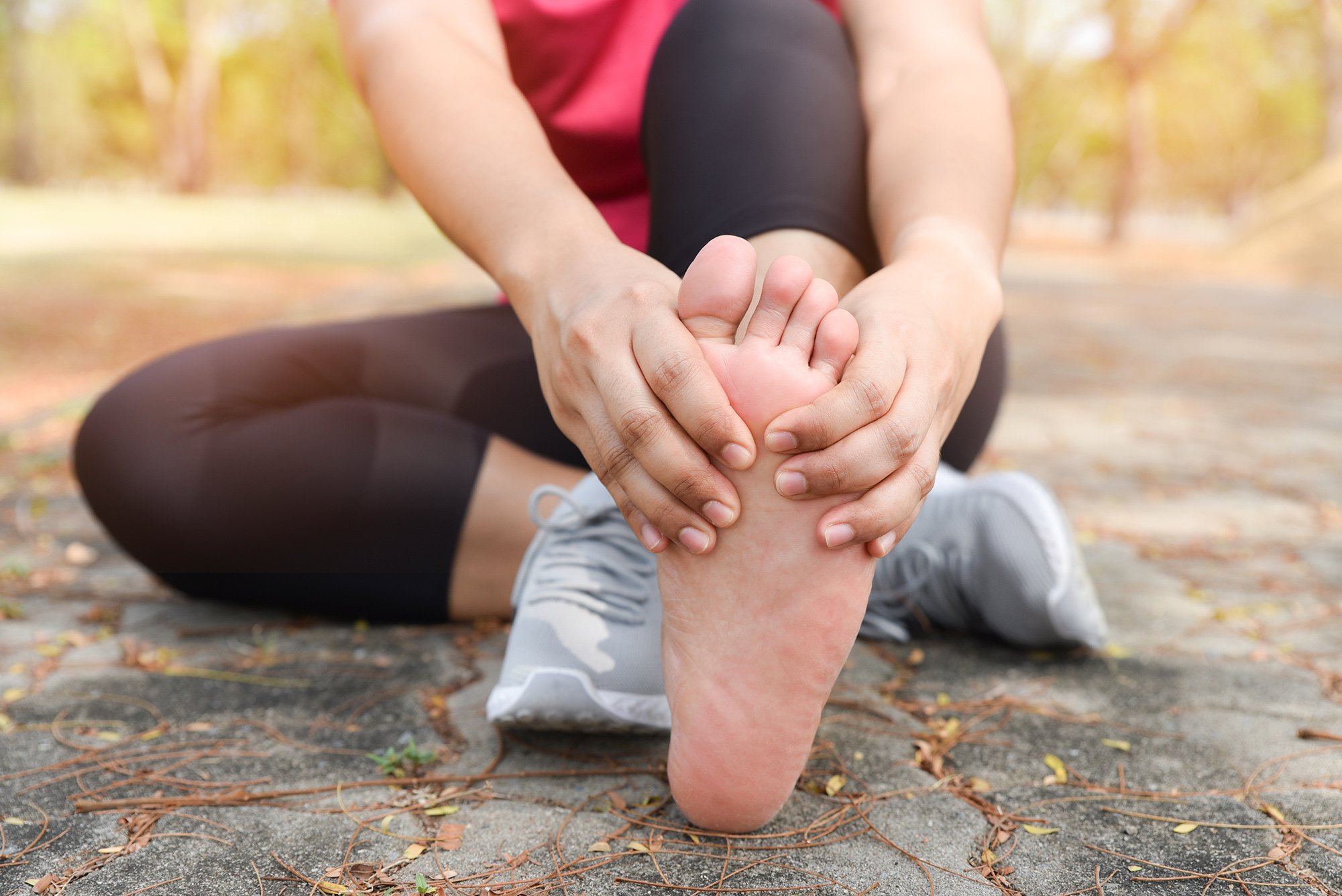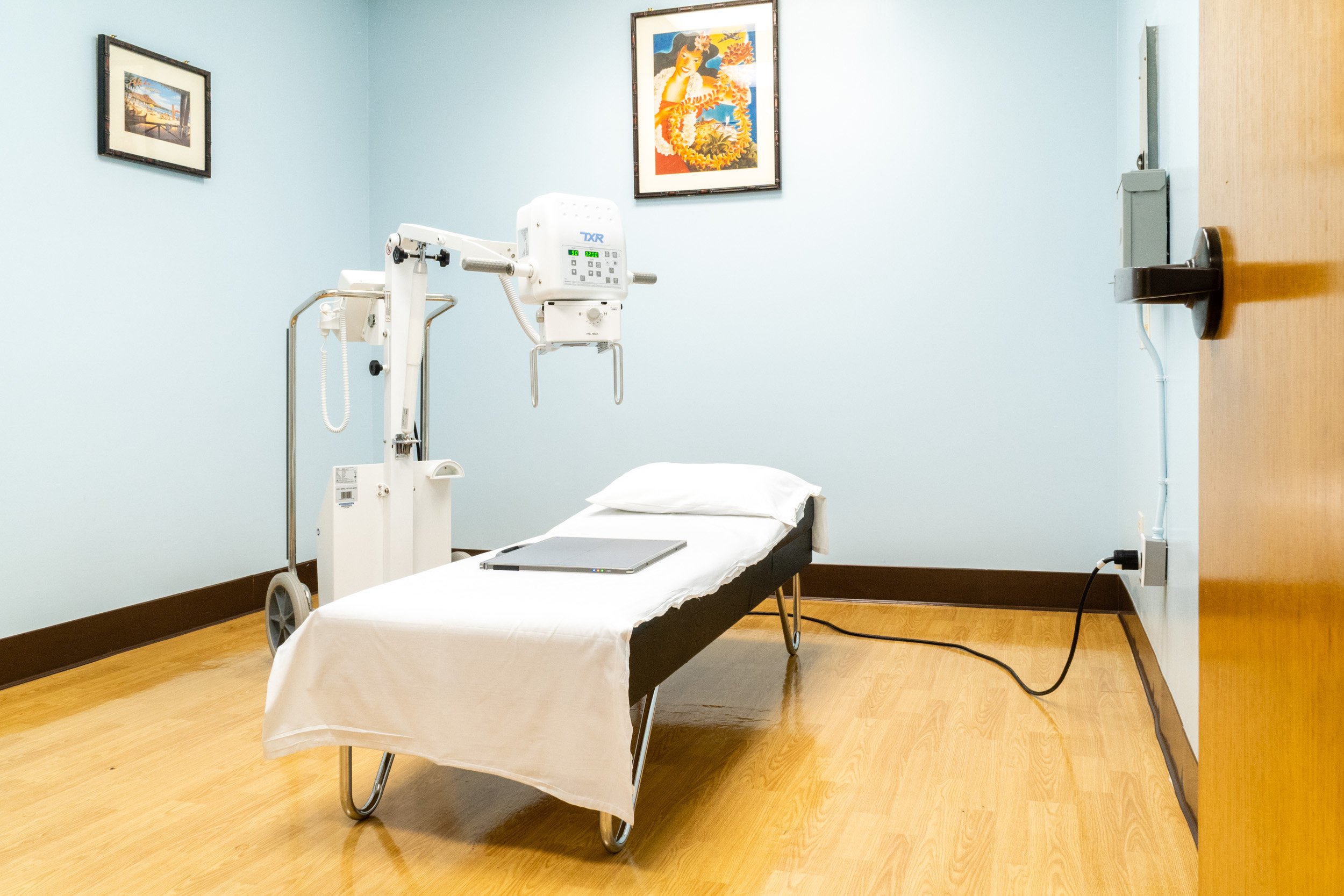Pain under your Big Toe or Ball of the Foot? Learn about Sesamoid Injuries.
What is a Sesamoid?
Sesamoid bones are embedded within the tendon and found in several joints in the body. In a typical foot, there are 2 pea-shaped sesamoid bones in the forefoot under the joint of the big toe.
The bones act like a pulley for the tendons which help the big toe move normally and push off during walking or running. The sesamoid bones are also a weight-bearing surface for the first metatarsal bone (bone connected to the big toe). The sesamoids absorb the weight that’s placed on the ball of the foot during activities such as walking, running or jumping.
Sesamoid Injuries
Injury can occur due to an accident or overuse which involves the sesamoid bones, tendons and/or surrounding tissue. Overuse injuries can be caused by activities that place increased pressure on the ball of the foot such as running, walking, basketball, football, golf, tennis and ballet.
Individuals with high arches are also more prone to developing sesamoid injuries. There is also a higher risk for those who frequently wear high-heeled shoes.
Types of Sesamoid Injuries
Turf Toe
Turf toe usually occurs when the big toe joint is bent too far or too forcefully. This action causes soft tissues and ligaments in the joint to stretch or tear. Turf toe causes immediate sharp pain and swelling. In some cases, a “pop” is felt when the injury occurs.
This foot injury affects the entire big toe joint and limits the toe’s range of motion. In some cases, the soft tissue attached to the sesamoid or the bone itself may be injured or fractured.
Turf toe is a common injury among football players. Their sudden movements and burst of energy to run downfield require frequently pushing off using their toes.
Most of the time a sesamoid injury gets better with treatments like rest, ice and a walking boot.
Fracture
Broken Sesamoid Bone
A fractured or broken sesamoid bone can be either acute or chronic.
An acute fracture is caused by direct trauma to the bone which results in swelling and pain at the site of impact.
A chronic sesamoid fracture is a stress fracture or hairline break typically caused by overuse or repetitive stress. This injury may cause prolonged pain under the big toe and in the ball of the foot. Pain may occur with increased activity and may be relieved with rest.
Sesamoiditis
Sesamoiditis is a type of tendonitis (inflammation of the tendons) that occurs in the ball of the foot. Because the tendons in the ball of the foot have small sesamoid bones embedded in them, these bones can become inflamed along with the tendons.
Sesamoiditis may cause dull, longstanding pain beneath the big toe joint that comes and goes with certain activities or certain shoes.
How Can Orthopedics Hawaii Help?
If you are experiencing foot pain come in to see us. All of our patients are seen by orthopedic surgeon Dr. Sam Chen. We are a walk-in orthopedic urgent care so you may come in at any time or schedule an appointment. Book your appointment by calling (808) 744-3360 or emailing aloha@orthopedicshi.com.
Initial Doctor’s Appointment
During your first visit, we will perform an assessment of your foot which may include testing the range of motion, pain tolerance and a visual inspection noting any swelling and/or discoloration.
Dr. Chen and our staff would like to understand how you suffered the injury, how it impacts your daily life and how severe your pain is. Our thorough discussion will help us suggest the best treatment options for you.
Depending on the type of injury and degree of severity, Dr. Chen may order an x-ray. Located next door in Doctors of Waikiki, we will capture images of your foot with a digital x-ray. Unlike older x-ray machines that capture the images on film, the images from a digital x-ray can be reviewed immediately.
Whether or not an x-ray is needed, Dr. Chen will discuss your treatment options with you. We want to ensure you understand the different options and why we are recommending them. There are no unnecessary questions, we encourage you to ask about the treatment, recovery, or anything else on your mind.
Digital X-Ray
Treatment Options
Nonsurgical Treatment
At Orthopedics Hawaii, we believe surgery should always be the last resort. There are various treatment options for sesamoid injuries that do not involve surgery.
Treatment options depend on the type of injury and degree of severity. They may include:
Padding, Strapping or Taping - A pad may be inserted into the shoe to cushion the sesamoid area. The toe may also be taped or strapped to relieve that area of pain.
Immobilization - A cast or removable walking boot may be used along with crutches to prevent weight on the injured foot.
Oral Medications - Nonsteroidal anti-inflammatory drugs (NSAIDs) such as ibuprofen may help lower pain and inflammation.
Physical Therapy - You may seek physical therapy for rehabilitation after the foot has been immobilized. Our orthopedic doctors may also recommend working with a physical therapist to learn exercises that help strengthen, condition and increase range of motion.
Dr. Chen can write a prescription for physical therapy and send that to the office of your choice. Doctors of Waikiki also offer physical therapy in-clinic.
Steroid Injections - In certain cases, cortisone is injected into the joint to reduce pain and inflammation.
Orthotic Devices - For long-term treatment of sesamoiditis, a custom orthotic can be inserted into the shoe to balance the pressure placed on the ball of the foot.
Follow-up Appointment
We will schedule a follow-up appointment with you to see how your recovery is progressing and discuss other treatment options if necessary.
Our patients are like family. Our mission is to help you recover and have a better quality of life. If you have any additional questions please don’t hesitate to call or email us.
Source: https://www.foothealthfacts.org/conditions/sesamoid-injuries-in-the-foot
Source: https://my.clevelandclinic.org/health/diseases/17590-turf-toe
Source: https://my.clevelandclinic.org/health/diseases/21671-sesamoiditis




